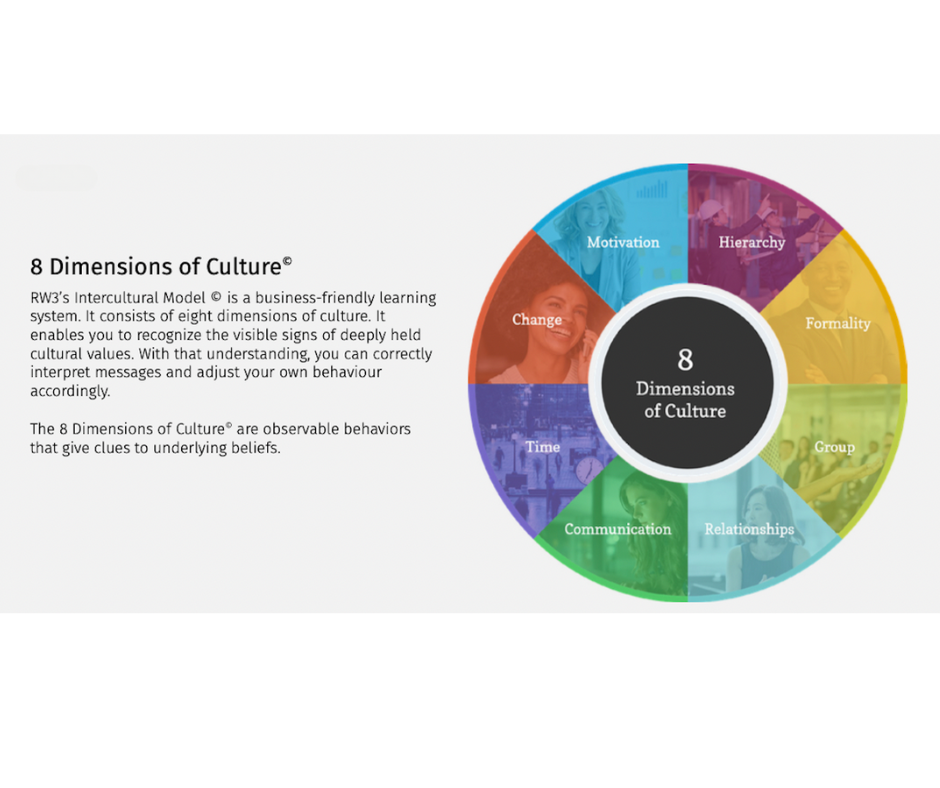Whether we know it or not, all of us are impacted at deep levels by various aspects of our culture. Culture can have many layers, like the earth, with some aspects resting at the surface, and others deeply engrained at the core.
Sometimes we are aware of how our culture influences things like our working and communication styles, while other times we are unconsciously impacted by culture at a fundamental level.
These differences mean that most business leaders and professionals will at some point encounter colleagues who have significant cultural differences that affect the way they work and communicate.
If you’re not aware that these differences can exist, it can be difficult to understand when certain behaviors or tendencies arise that might clash with your own, and it can sometimes feel nearly impossible to resolve these differences to collaborate effectively.
To be an effective business leader or team member, it’s critical to be able to recognize when these differences occur and to learn to “flex” your style to meet others where they are in order to bridge cultural gaps and enhance collaboration.
RW3 CultureWizard’s Intercultural Model outlines 8 Dimensions of Culture© that influence all of us, both inside and outside of the workplace.

CultureWizard’s Culture Calculator is a personalized assessment that helps you see where you sit on the spectrum of 8 Cultural Dimensions. You can compare yourself to your colleagues as well as to other countries and regions.
Every person, depending both on regional and individual culture, will score different rankings in each of these 8 dimensions.
Everyone is different. So, when you’re working with people who are different from you, even in just one cultural dimension, it can lead to miscommunication or challenges with collaboration.
Below are some examples of how cultural rankings in 3 of the dimensions—Relationships, Hierarchy, and Communication—can impact perception and interaction.
*Note: there is no “better” or “worse”; the calculator simply measures different cultural behaviors along a spectrum.
Cultural Dimension: Relationships
How flexing helps in this cultural dimension:
Someone who is more transactional by nature can adapt to allow more time for social conversation, understanding that others might have a need to develop trust and connection before moving on to business. With this awareness, more transactional individuals are less likely to become frustrated or to rush interactions.
Likewise, someone who is relationship-oriented can adapt to colleagues who are more prone to get straight to business, and maybe reduce some of the time spent on social conversation—understanding that this preference is a cultural tendency, and not cause for offense.
Cultural Dimension: Hierarchy
How flexing helps in this cultural dimension:
Someone who is relatively hierarchical can recognize that more egalitarian colleagues might not place as much value on authority, and therefore avoid feeling offended if others take initiative or openly disagree. Adapting to allow colleagues more freedom in crossing lines of hierarchy, and avoiding external displays of power that might not be well-received, can create a stronger basis for collaboration.
Those who are more egalitarian can flex to show respect to those in positions of authority when it’s known that those colleagues value hierarchy, and can avoid taking things personally if hierarchical tendencies are enacted by colleagues or managers.
Cultural Dimension: Communication
How flexing helps in this cultural dimension:
People with a more direct communication style can flex to soften their tone, increase the amount of context they use to explain points, pay attention to others’ body language, and deliver constructive feedback or dissenting opinions in a diplomatic way that doesn’t cause offense or cause others to lose a sense of integrity.
Those with an indirect communication style can flex to be briefer in their explanations, can do their best to share a difference of opinion authentically when among colleagues who are more direct, and can avoid taking offense when addressed in a manner more direct than they’re accustomed to.
In each of the examples above, the differences in work and communication styles can create a disconnect that can sometimes be difficult to identify, especially if two people’s rankings are only moderately different.
The more knowledgeable you become about how culture works, and the various ways it can influence people in the workplace, the more empowered you are to recognize and navigate cultural differences when they arise.
Keep in mind that when you flex your style, it’s important not to sacrifice your authenticity or core values. But there are ways to adapt to facilitate better communication and collaboration without changing who you are.
Flexing in the ways suggested above can often be easier said than done. It’s sometimes difficult to adapt behaviors that arise from deep-seated cultural values, so it’s best to be patient with yourself and with your colleagues. Increasing your awareness about cultural differences is key.
Learn more about the effect of culture in the workplace with our sample course Impact of Culture on Teamwork.

